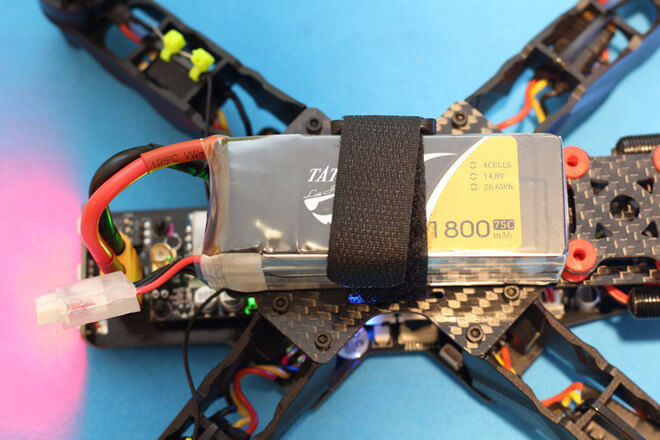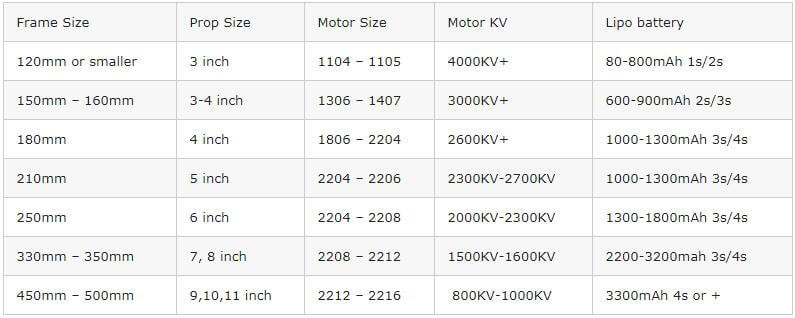How to choose Quadcopter Frame
Dec 19th 2018
Quadcopter frame is important component of quadcopter, There are a lots of quadcopter frame sizes and no thumb rule for size of the frame, but the most common is from 180 mm to 800 mm. Each quadcopter frame with different attributes is designed for different style quadcopter such as fpv / sport racing / cameras / mini etc. Size of wheelbase is quadcopter size. Here talk about quadcopter frame sizes with you.
Frame -The structure that holds all the components together. One of the most important part of quadcopter is its frame because it supports motors and other electronics and prevents them from vibrations. You have to be very precise while making it. They need to be designed to be strong but also lightweight.
Quadcopter frame sizes
If you want to make a quadcopter, but was confused with how to begin and how to choose one. It has been old long talk that you have to clearly know what's purpose of your quadcopter, fpv / sport racing or cameras etc.?
All parts of quadcopter will be hold on the frame, First, you can decide as to which frame should take? Then, look at the recommended setup of frame to buy other parts. Generally speaking, from 180 mm to 250 mm is most popular frames, more bigger one is from 280mm to 800mm even more.
There are some suggestions about quadcopter frame size related to Lipo Battery as below, maybe useful for you.

Quadcopter frame and lipo battery and motor and propeller size matching table:
Materials for quadcopter frame
Most available materials for the frame are:
Carbon Fiber - Aluminium - Wood, such as Plywood or MDF (Medium-density fibreboard) - Plastic & PVC - Fiberglass
- Carbon Fiber: One of the most common materials for multi-rotor frames is carbon fiber.It is lightweight but expensive. A great many of its physical properties are perfectly suited to the hobby. The only catch is that carbon fiber is known to block radio signals, which is obviously not ideal for a hobby that depends on multiple transmissions. That means you have to exercise a bit of care in how you place antennas on your craft. It can be used though, and is often. Just be aware that blocked signals are a possibility
- Wood: Build a frame with wood, It's fast, low cost and does not require much effort. While not nearly as sexy as carbon fiber or fiberglass, is a very good material for this sort of thing. It’s cheap, RF transparent, takes brief structural overloads well, uses simple adhesives and dampens vibrations wonderfully.
- Aluminium: it is widely used for frame, you need to buy parts and have some tools to cut or connect them together. Very lightweight and aluminum can transmit vibration quite well. Aluminum is easy to fabricate and can often be bent back into shape after crashes.
- Plastic & PVC: Frame usually be 3D printed with plastic, This material is lightweight, cheap, and perhaps a bit to ugly for your new quadcopter frame as well as PVC.
- Fiberglass: Another material you could consider is thin G-10 fiberglass sheet which is easily machinable. This is nice for the body area as it's RF transparent. It also makes nice motor mounts.
Although it is not as important as for the arms which of the three material to use for the center plate, Carbon Fiber and plywood are most commonly seen because of its the light weight, easy to work with and good vibration absorbing features.
Some tips for choosing quadcopter frame:
Some quadcoper frame can be fine-tuned to suit your exact requirements. such as HobbyKing Switch FPV Quadcopter which By allowing you to choose between 380 and 320 mm wheelbase. - In our case we want to build quadcopter so make sure the angle between two arms is 90 degree and also check that arms are not twisted. - If your frame is too big compare to your power setup (motor-prop, esc , battery) it will add extra weight while if it's too small props will fight with each other.


